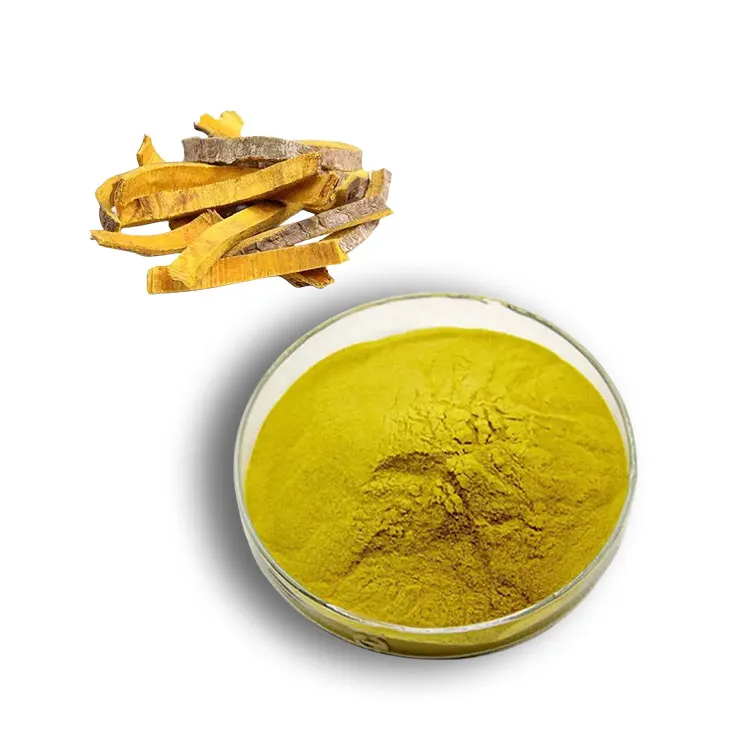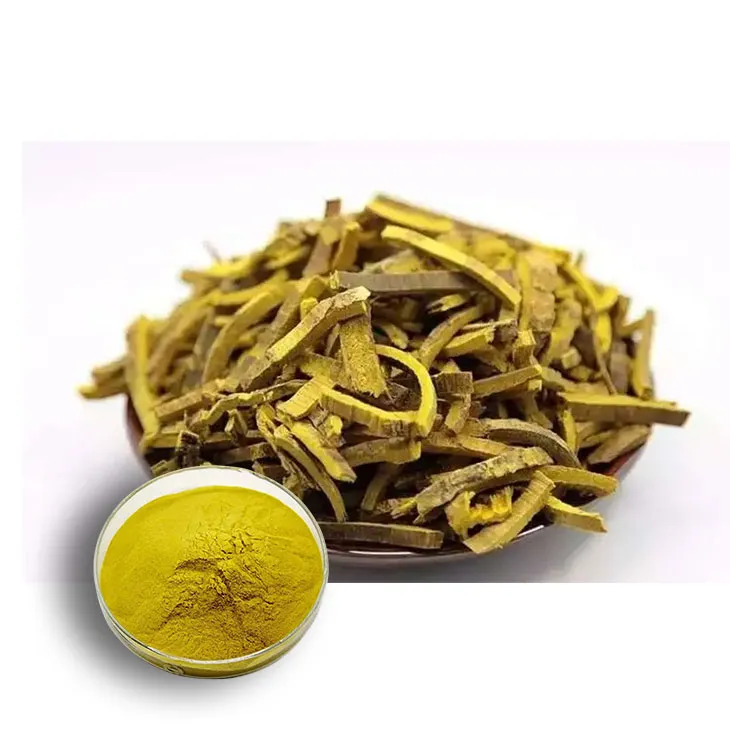- 0086-571-85302990
- sales@greenskybio.com
Understand the main processes of Phellodendron extract manufacturing in the food industry.
2024-12-14

1. Introduction
The food industry is a crucial part of the modern economy. Among its various components, the production of plant extracts, such as the Phellodendron amurense extract, holds significant importance. This extract is used in the food industry for various reasons, including its potential health - promoting properties. Understanding the manufacturing process of this extract is essential for ensuring its quality and safety.

2. Raw Material Collection
The main manufacturing process of Phellodendron amurense extract commences with raw material collection. High - quality Phellodendron amurense bark is carefully chosen. This selection is based on several factors:
2.1 Origin
The origin of the bark is crucial. Bark from certain regions may have better quality due to differences in soil composition, climate, and other environmental factors. For example, areas with rich soil and a suitable climate may produce Phellodendron amurense bark with higher levels of active ingredients.
2.2 Growth Environment
The growth environment of the Phellodendron amurense tree also plays a vital role. Trees growing in less - polluted areas, with adequate sunlight and water, are more likely to produce high - quality bark. A clean and natural growth environment helps in the proper development of the tree and the formation of beneficial compounds in the bark.
2.3 Maturity
The maturity of the bark is another important consideration. Bark from mature trees is generally preferred as it has had more time to develop and accumulate active ingredients. Immature bark may not contain the same levels of the desired compounds, which could affect the quality of the final extract.

3. Pretreatment of Raw Materials
Once the Phellodendron amurense bark is collected, it needs to be pretreated. This pretreatment involves two main steps:
3.1 Cleaning
The bark is cleaned to remove impurities such as dirt and dust that are adhered to it. This is important because these impurities can contaminate the final extract and may also interfere with the subsequent processing steps. Cleaning can be done using gentle mechanical methods or by washing with clean water, depending on the nature of the impurities and the requirements of the manufacturing process.
3.2 Drying
After cleaning, the bark is dried to adjust its moisture content to an appropriate level for subsequent processing. If the moisture content is too high, it can lead to problems such as mold growth during storage or improper extraction. Drying can be carried out using natural methods, such as air - drying in a clean and well - ventilated area, or by using artificial drying equipment with controlled temperature and humidity settings.

4. Extraction Process
The extraction process is a key step in obtaining the Phellodendron amurense extract. There are mainly two common extraction methods:
4.1 Solvent Extraction
In solvent extraction, appropriate solvents are used. One commonly used solvent is ethanol.
- First, the Phellodendron amurense bark is soaked in the ethanol solvent.
- Then, through a certain period of extraction time, which can vary depending on factors such as the nature of the bark and the desired concentration of the extract, the active ingredients in the bark start to dissolve into the solvent.
- Appropriate temperature control is also necessary during this process. Different active ingredients may have different solubility characteristics at different temperatures. By carefully controlling the temperature, the extraction efficiency can be optimized, ensuring that as many of the desired active ingredients as possible are dissolved into the solvent.
4.2 Supercritical Fluid Extraction
In supercritical fluid extraction, carbon dioxide is often used as the supercritical fluid.
- Under specific pressure and temperature conditions, carbon dioxide reaches its supercritical state. In this state, it has unique properties that make it an effective solvent for extracting the target components from the Phellodendron amurense bark.
- The supercritical carbon dioxide can penetrate the bark and selectively extract the desired active ingredients, leaving behind unwanted substances. This method has the advantage of being more environmentally friendly compared to some solvent extraction methods, as carbon dioxide is a non - toxic and easily recoverable gas.

5. Purification of the Extract Solution
After extraction, the obtained extract solution needs to be purified. There are two main purification steps:
5.1 Filtration
Filtration is a basic purification method. It can remove large - sized impurities and particulate matter in the solution. This is important as these impurities can affect the quality and stability of the final extract. Filtration can be carried out using various types of filters, such as filter papers or membrane filters, depending on the size and nature of the impurities to be removed.
5.2 Chromatography
After filtration, techniques such as chromatography may be used for further purification. Chromatography is a powerful method for separating and purifying the target active ingredients.
- There are different types of chromatography, such as high - performance liquid chromatography (HPLC) and gas chromatography (GC), which can be used depending on the nature of the extract and the specific active ingredients to be purified.
- Chromatography works on the principle of differential adsorption or partition of components in a mobile phase and a stationary phase. By carefully selecting the appropriate chromatographic conditions, the target active ingredients can be separated from other components in the extract solution, resulting in a more purified extract.
6. Concentration of the Purified Extract
Finally, the purified Phellodendron amurense extract is concentrated.
- Through evaporation or other concentration methods, the solvent is removed to a large extent. Evaporation can be carried out under reduced pressure or at an appropriate temperature to speed up the process while minimizing the degradation of the active ingredients.
- As the solvent is removed, the concentration of the active ingredients in the extract is increased. This results in the final Phellodendron amurense extract product that can be used in the food industry, with a high concentration of the desired active ingredients and in a form that is suitable for various applications in food products.
7. Conclusion
The manufacturing process of Phellodendron amurense extract in the food industry involves multiple steps, from raw material collection to final concentration. Each step is crucial for ensuring the quality and effectiveness of the extract. By carefully controlling these processes, producers can obtain high - quality Phellodendron amurense extract that can be safely and effectively used in the food industry, providing potential health benefits and enhancing the quality of food products.
FAQ:
Question 1: What are the criteria for selecting Phellodendron amurense bark as raw materials?
The Phellodendron amurense bark selected as raw materials should meet certain standards in terms of origin, growth environment and maturity.
Question 2: What are the common extraction methods in the manufacturing process of Phellodendron amurense extract?
There are mainly two common extraction methods: solvent extraction (using solvents such as ethanol) and supercritical fluid extraction (using carbon dioxide as the supercritical fluid).
Question 3: How is the raw material pretreated before extraction?
Before extraction, the raw materials need to be pretreated. This includes cleaning to remove impurities like dirt and dust adhered to the bark, and drying to adjust the moisture content to an appropriate level for subsequent processing.
Question 4: What purification methods are used for the extract solution?
Filtration is a basic purification method to remove large - sized impurities and particulate matter in the solution. Then, techniques such as chromatography may be used for further purification to separate and purify the target active ingredients.
Question 5: How is the final Phellodendron amurense extract obtained?
The purified Phellodendron amurense extract is concentrated. Through evaporation or other concentration methods, the solvent is removed to a large extent, and the concentration of the active ingredients in the extract is increased, so as to obtain the final Phellodendron amurense extract product that can be used in the food industry.
Related literature
- Study on the Extraction and Application of Phellodendron amurense Extract in the Food Industry"
- "Manufacturing Processes of Plant Extracts in the Food Industry: A Focus on Phellodendron amurense"
- ▶ Hesperidin
- ▶ citrus bioflavonoids
- ▶ plant extract
- ▶ lycopene
- ▶ Diosmin
- ▶ Grape seed extract
- ▶ Sea buckthorn Juice Powder
- ▶ Beetroot powder
- ▶ Hops Extract
- ▶ Artichoke Extract
- ▶ Reishi mushroom extract
- ▶ Astaxanthin
- ▶ Green Tea Extract
- ▶ Curcumin Extract
- ▶ Horse Chestnut Extract
- ▶ Other Problems
- ▶ Boswellia Serrata Extract
- ▶ Resveratrol Extract
- ▶ Marigold Extract
- ▶ Grape Leaf Extract
- ▶ blog3
- ▶ blog4
- ▶ blog5
-
Pure 85% Tomentil Extract.
2024-12-14
-
Carrageenan Extract Powder
2024-12-14
-
Troxerutin
2024-12-14
-
Tongkat Ali Extract Powder
2024-12-14
-
Saponin Extract
2024-12-14
-
Rosemary extract
2024-12-14
-
Wheat Germ Extract
2024-12-14
-
Dandelion Root Extract
2024-12-14
-
Coix Seed Extract
2024-12-14
-
Sea buckthorn Juice Powder
2024-12-14
-
Alfalfa Meal
2024-12-14





















